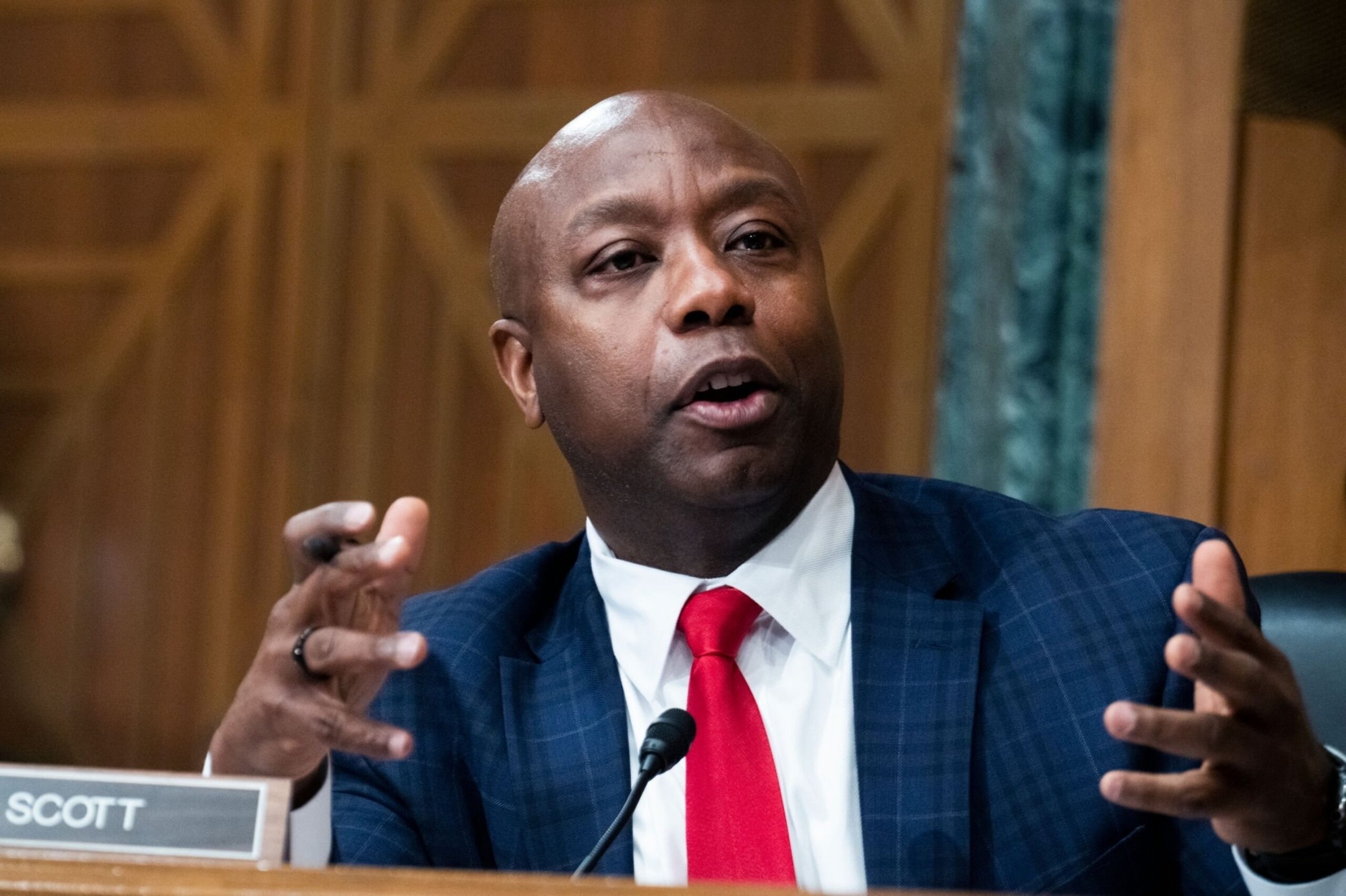Tim Scott Tax Plan: Details & Analysis
In mid-November, U.S. Senator Tim Scott (R-SC) suspended his 2024 presidential campaign. Scott’s decision is a loss for taxpayers and people interested in taxA tax is a mandatory payment or charge collected by local, state, and national governments from individuals or businesses to cover the costs of general government services, goods, and activities.
policy ideas, since he proposed one of the more detailed and sound tax plans in a campaign season otherwise lacking specifics on tax policy.
Scott’s embrace of full expensingFull expensing allows businesses to immediately deduct the full cost of certain investments in new or improved technology, equipment, or buildings. It alleviates a bias in the tax code and incentivizes companies to invest more, which, in the long run, raises worker productivity, boosts wages, and creates more jobs.
for capital investment was a bright spot in his tax plan. Scott proposed making permanent 100 percent bonus depreciationBonus depreciation allows firms to deduct a larger portion of certain “short-lived” investments in new or improved technology, equipment, or buildings, in the first year. Allowing businesses to write off more investments partially alleviates a bias in the tax code and incentivizes companies to invest more, which, in the long run, raises worker productivity, boosts wages, and creates more jobs.
, which provides full and immediate expensing for investment in machinery, equipment, and other short-lived assets. Permanence would reverse the phaseout of bonus depreciationDepreciation is a measurement of the “useful life” of a business asset, such as machinery or a factory, to determine the multiyear period over which the cost of that asset can be deducted from taxable income. Instead of allowing businesses to deduct the cost of investments immediately (i.e., full expensing), depreciation requires deductions to be taken over time, reducing their value and discouraging investment.
underway as part of the Tax Cuts and Jobs Act (TCJA) of 2017 and would be one of the most pro-growth tax reforms, increasing long-run GDP by 0.4 percent. His plan would have paid for this pro-growth reform by restricting the deductibility of interest payments.
Scott also supported Senator Todd Young’s (R-IN) American Innovation and Jobs Act, which would cancel the need for businesses to amortize research and development (R&D) expenses over 5 years (for domestic expenses, 15 years for foreign expenses), allowing them to be immediately deducted instead. The switch to R&D amortization, which began in 2022, was another TCJA-related policy change meant to offset the cost of the bill, but it is an unconventional policy not found in other countries, since it clearly penalizes R&D investment.
Scott’s tax plan went further in the direction of expensing by proposing neutral cost recoveryCost recovery is the ability of businesses to recover (deduct) the costs of their investments. It plays an important role in defining a business’ tax base and can impact investment decisions. When businesses cannot fully deduct capital expenditures, they spend less on capital, which reduces worker’s productivity and wages.
for structures, which currently must be depreciated over very long periods, e.g., 27.5 years for residential buildings and 39 years for commercial buildings. Such a delay significantly erodes the value of deductions, due to inflationInflation is when the general price of goods and services increases across the economy, reducing the purchasing power of a currency and the value of certain assets. The same paycheck covers less goods, services, and bills. It is sometimes referred to as a “hidden tax,” as it leaves taxpayers less well-off due to higher costs and “bracket creep,” while increasing the government’s spending power.
and the time value of money, reducing incentives to build, maintain, and upgrade the nation’s housing, factories, and offices. A neutral cost recovery system (NCRS) adjusts depreciation deductions for inflation and the time value of money, mirroring the effect of full expensing.
On NCRS policy design, Scott specifically cited the CREATE JOBS Act, introduced by Senator Ted Cruz (R-TX) and former Senator Martha McSally (R-AZ) in 2020, which included expensing for short-lived assets and R&D as well. The NCRS adjustments in the bill would account for inflation using the GDP deflator and the time value of money using a 3 percent rate of return.
We find that providing neutral cost recovery to structures as in the CREATE JOBS Act would increase long-run economic output by 1.2 percent, increase the capital stock by 2.3 percent, raise wages by 1 percent, and create about 235,000 full-time equivalent jobs.
Neutral cost recovery for structures would reduce federal revenue by a small amount over the 10-year budget window if applied only to new investment, totaling about $9.4 billion over 10 years. Over the long run, as the NCRS adjustments compound, the cost would increase to about $34.9 billion annually in 2033 dollars.
The revenue cost would rise further if the NCRS adjustment is applied to outstanding depreciation deductions for existing structures, as specified in the CREATE JOBS Act. Doing so does not create any additional economic benefit but may simplify the treatment in some ways.
In addition to improving cost recovery for investment, Scott proposed making the individual provisions of the TCJA permanent. We find that doing so would increase long-run GDP by 0.5 percent and create about 686,000 full-time equivalent jobs but reduce federal revenue by about $3 trillion over 10 years (including interest costs) on a conventional basis and by about $2.6 trillion over 10 years on a dynamic basis (i.e., accounting for the increased size of the economy).
Outside of TCJA-related tax changes, Scott also proposed extending the child tax creditA tax credit is a provision that reduces a taxpayer’s final tax bill, dollar-for-dollar. A tax credit differs from deductions and exemptions, which reduce taxable income, rather than the taxpayer’s tax bill directly.
(CTC) to expectant mothers, expanding the educator tax deductionA tax deduction is a provision that reduces taxable income. A standard deduction is a single deduction at a fixed amount. Itemized deductions are popular among higher-income taxpayers who often have significant deductible expenses, such as state/local taxes paid, mortgage interest, and charitable contributions.
to pre-K teachers and athletic coaches, and making the adoption tax credit refundable, ideas from bills Scott co-sponsored in the Senate. He would also have repealed the estate taxAn estate tax is imposed on the net value of an individual’s taxable estate, after any exclusions or credits, at the time of death. The tax is paid by the estate itself before assets are distributed to heirs.
, which would cost over $300 billion over 10 years.
One weak area of Scott’s tax and fiscal plan was its likely effect on budget deficits. While Scott proposed rolling back non-defense discretionary spending to pre-pandemic levels, the resulting savings would not be enough to offset his tax changes, nor would it address persistent and growing deficits in the future driven by unsustainable growth in entitlement programs (e.g., Social Security and Medicare).
For example, reverting to fiscal year (FY) 2020 budget levels for non-defense discretionary spending starting in FY 2024 (and keeping the baseline growth path) would save about $2.1 trillion over 10 years (slightly higher starting in FY 2026 after the election) including interest costs. But these savings would not be enough to offset permanent individual TCJA provisions over the budget window from 2026-2035. In addition, the remaining tax cuts Scott proposes would require further spending cuts or other offsets to keep deficits from worsening.
While not perfect, Senator Scott provided a more detailed and sound tax plan than other 2024 candidates, and he prioritized pro-growth tax reforms like full cost recovery. The remaining 2024 presidential candidates should be as specific as possible and center pro-growth tax reforms in their own plans. Taxpayers deserve as much.
Stay informed on the tax policies impacting you.
Subscribe to get insights from our trusted experts delivered straight to your inbox.
Subscribe
Share






